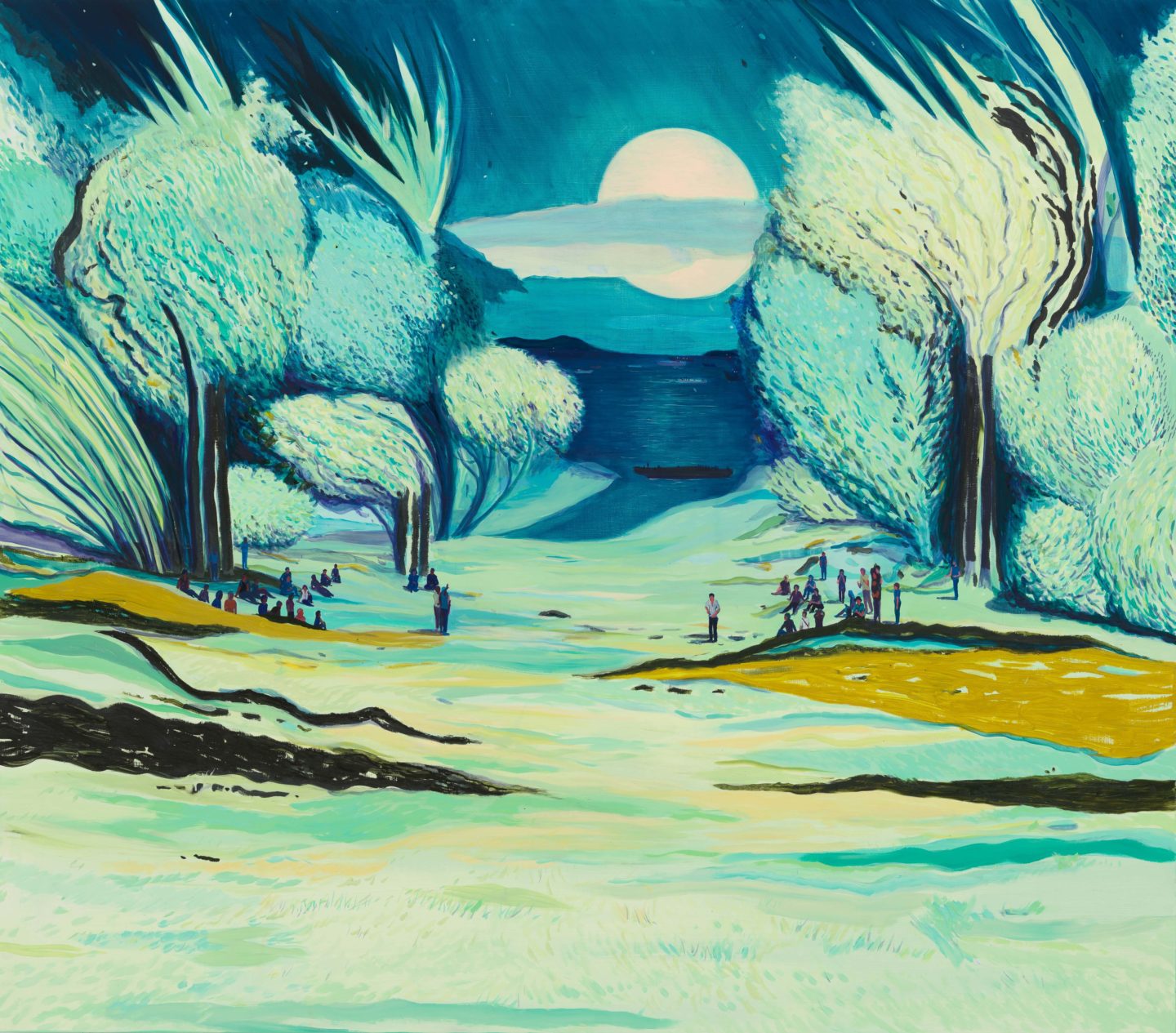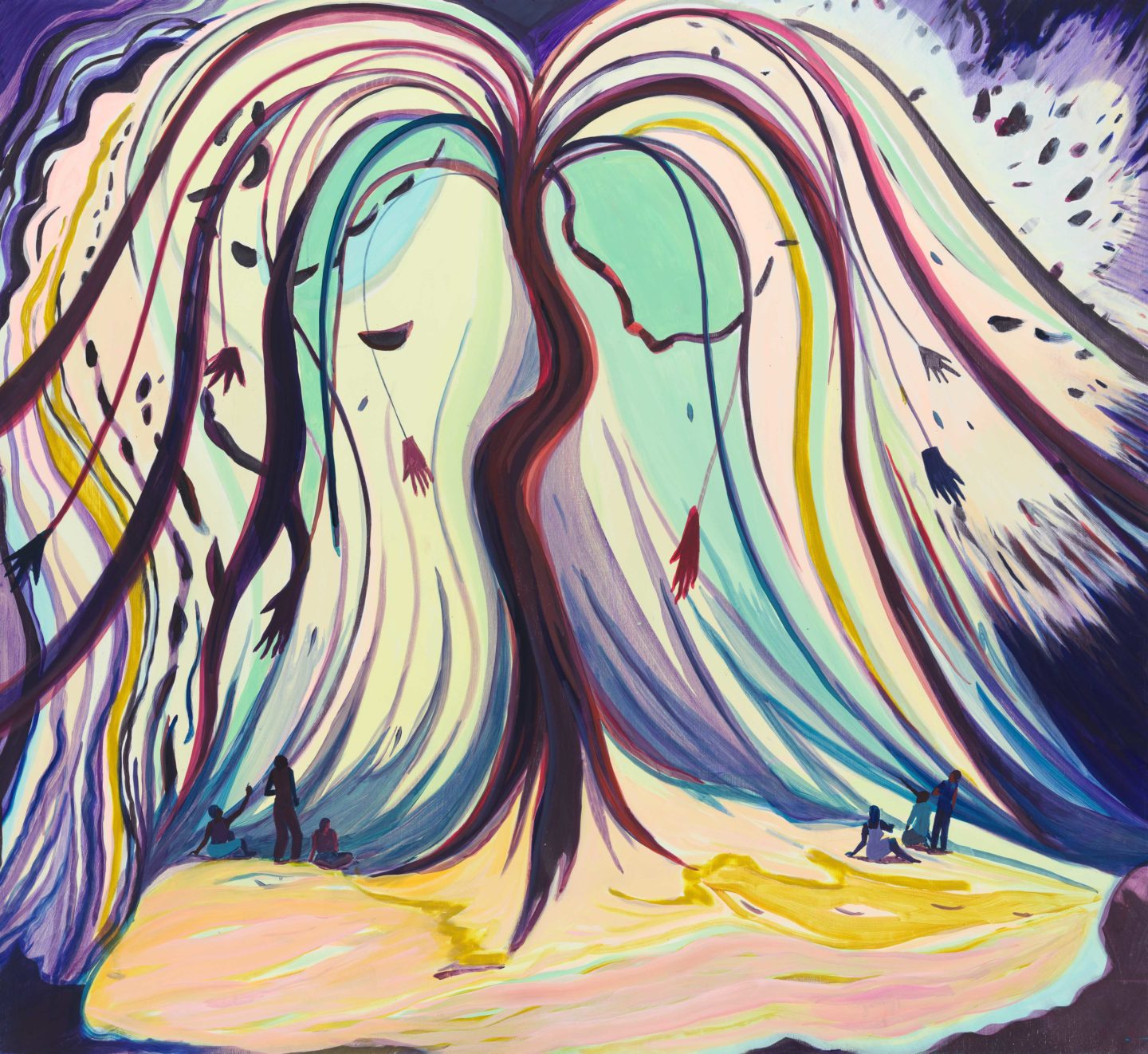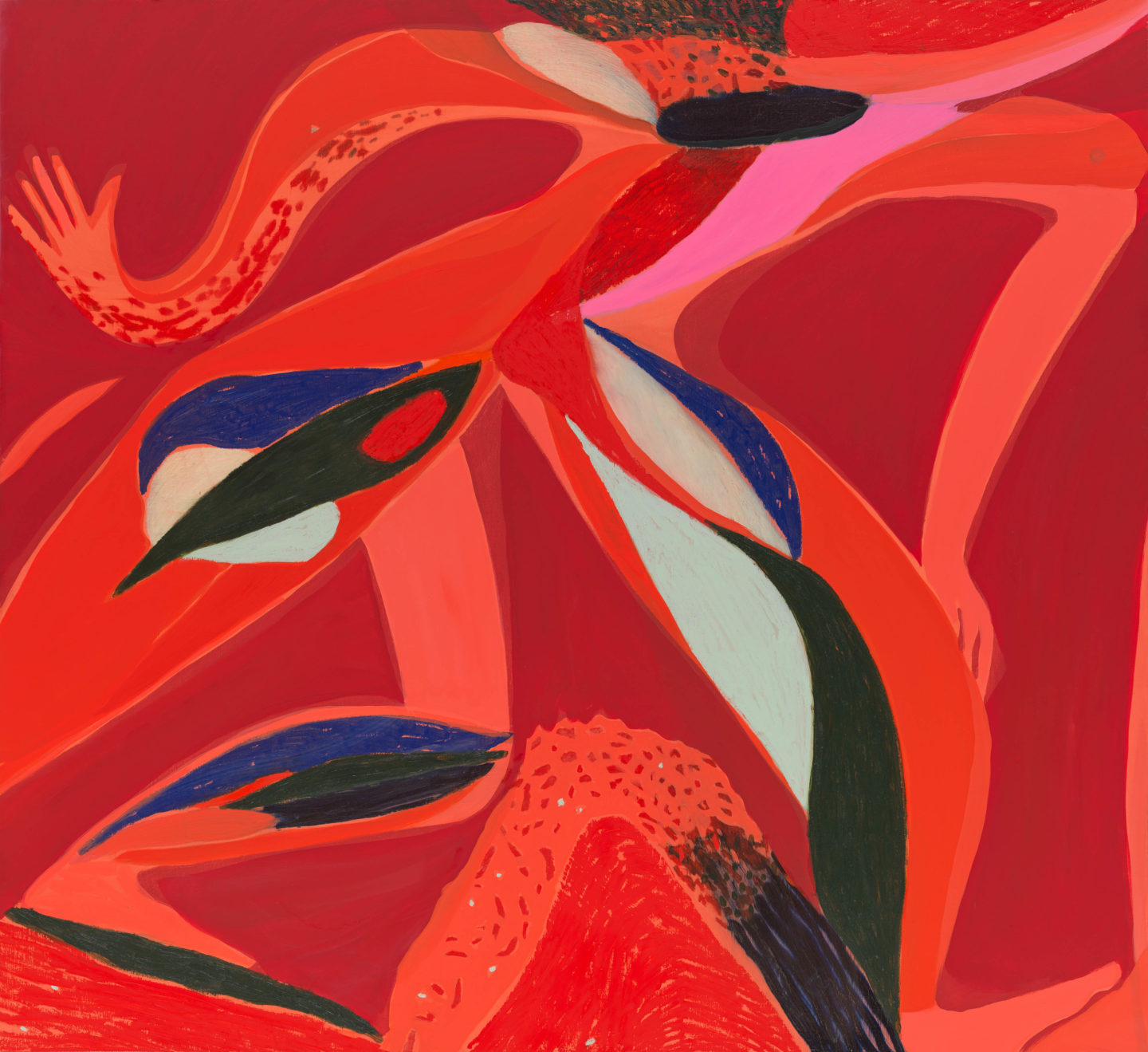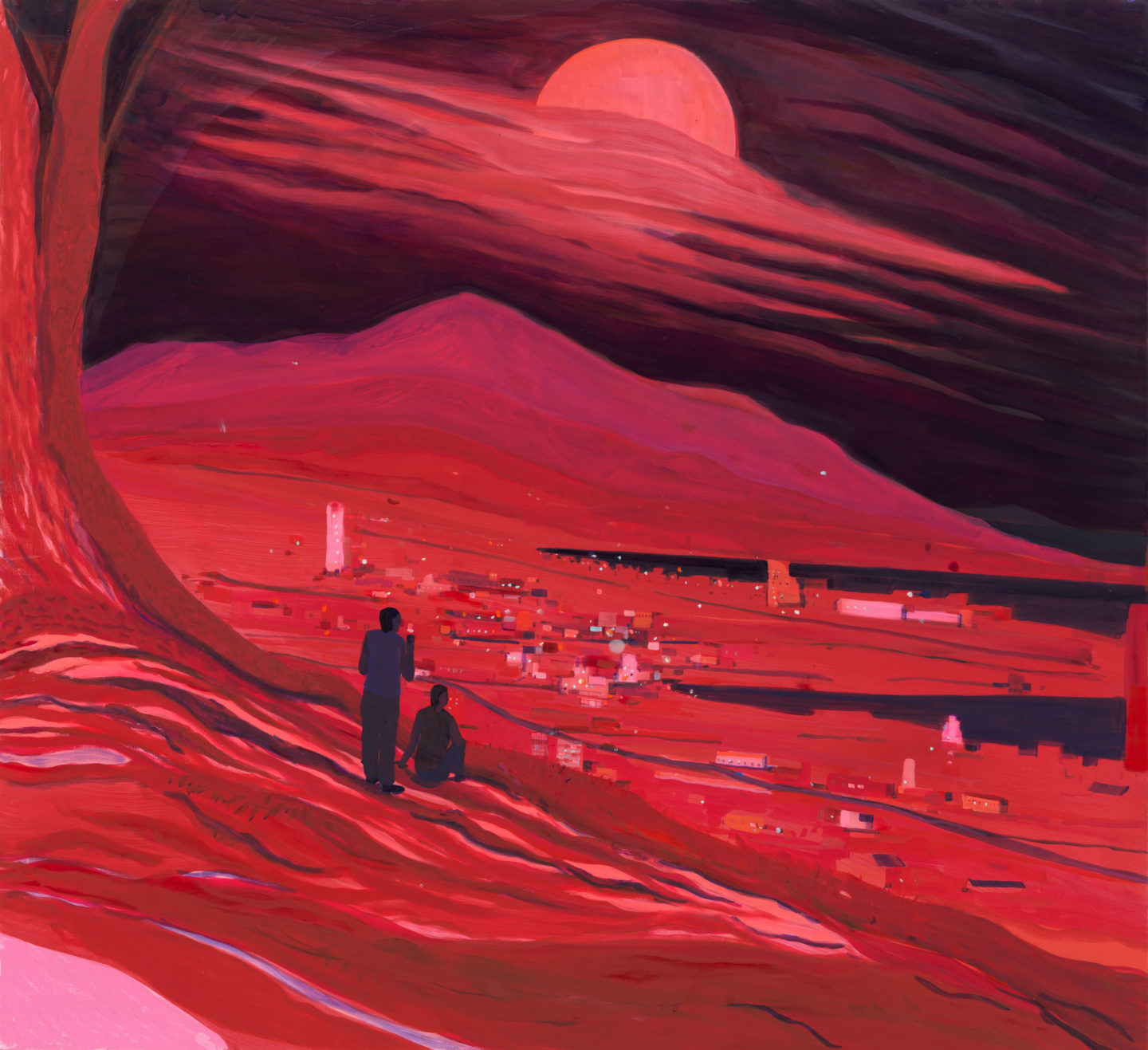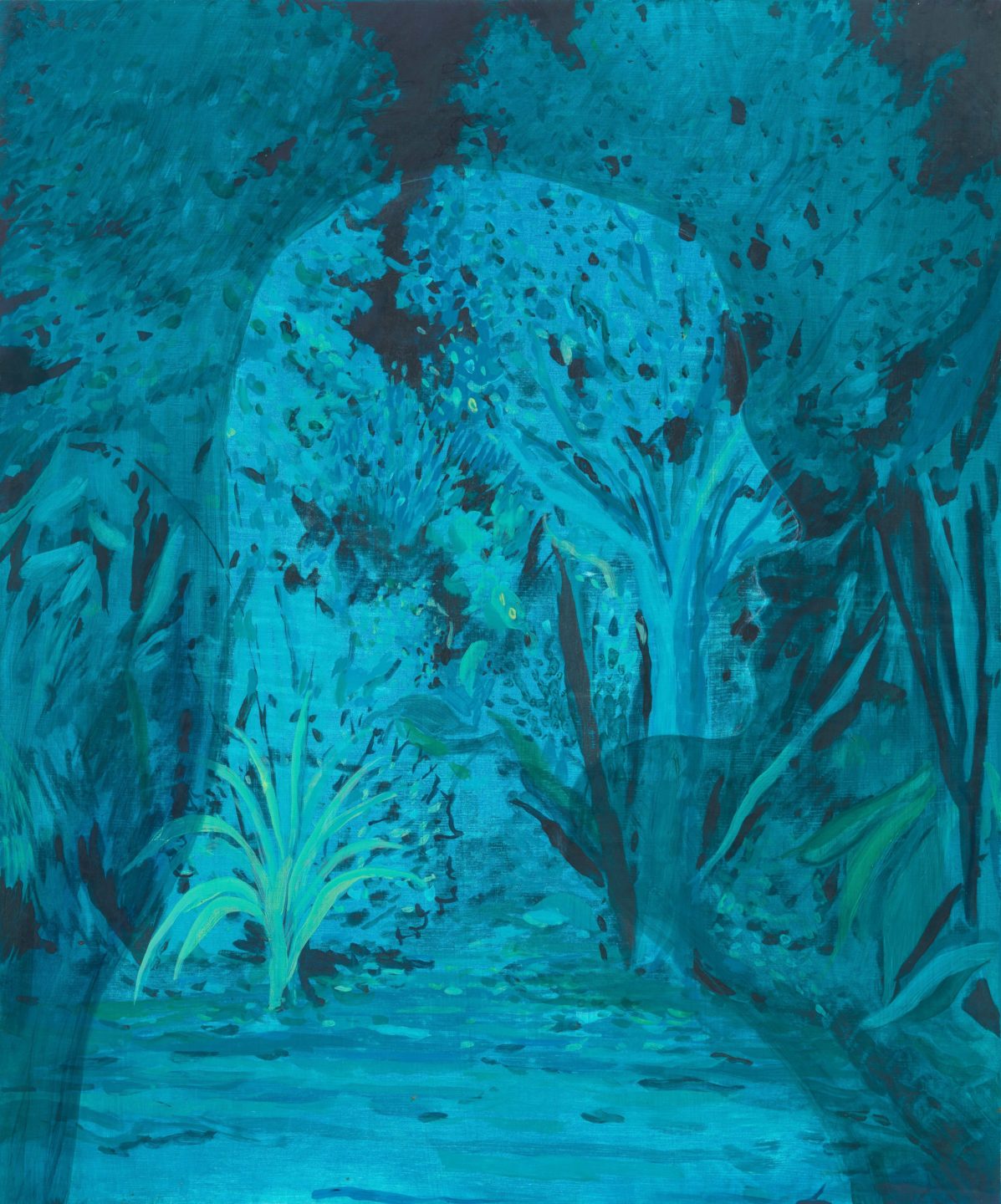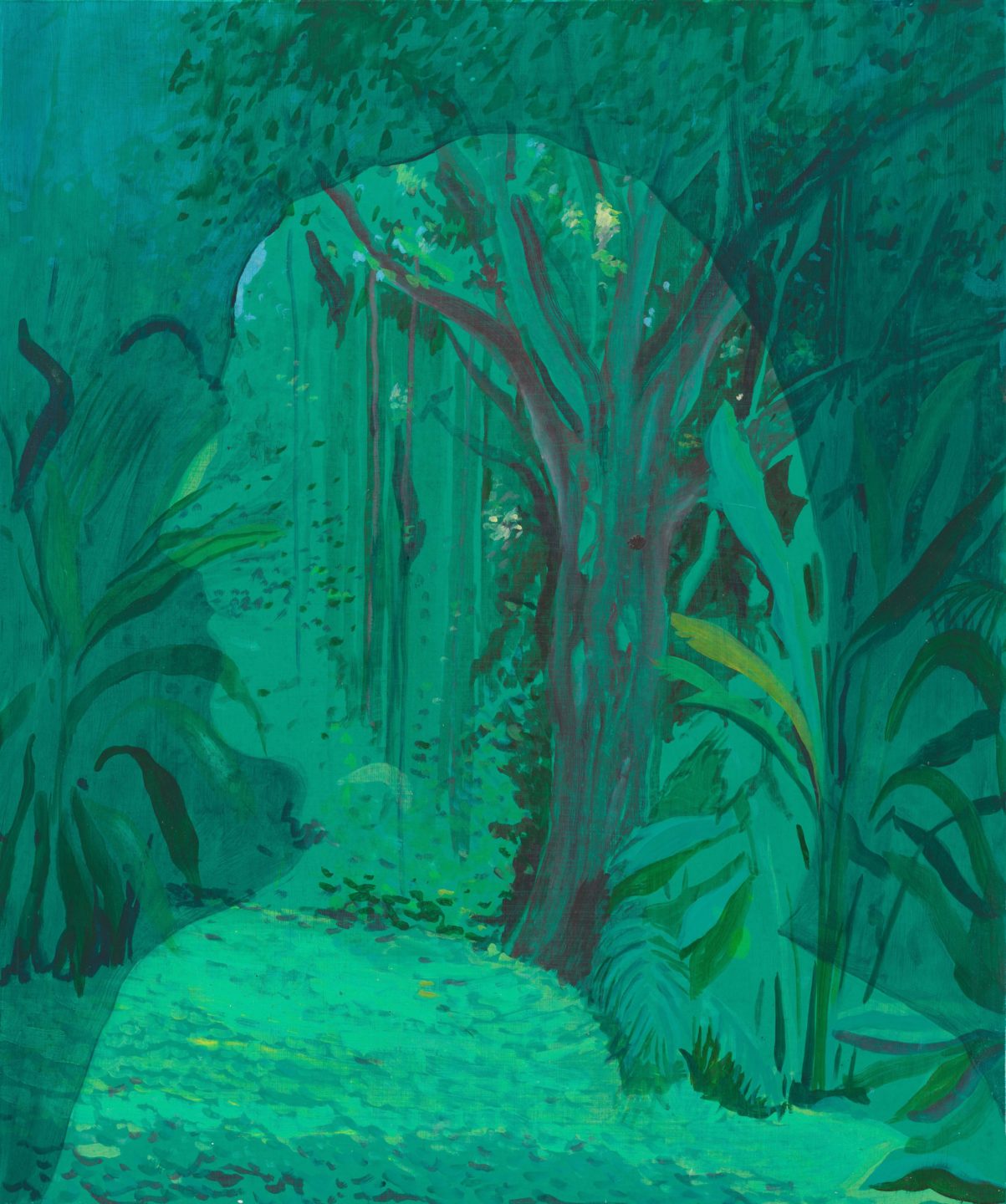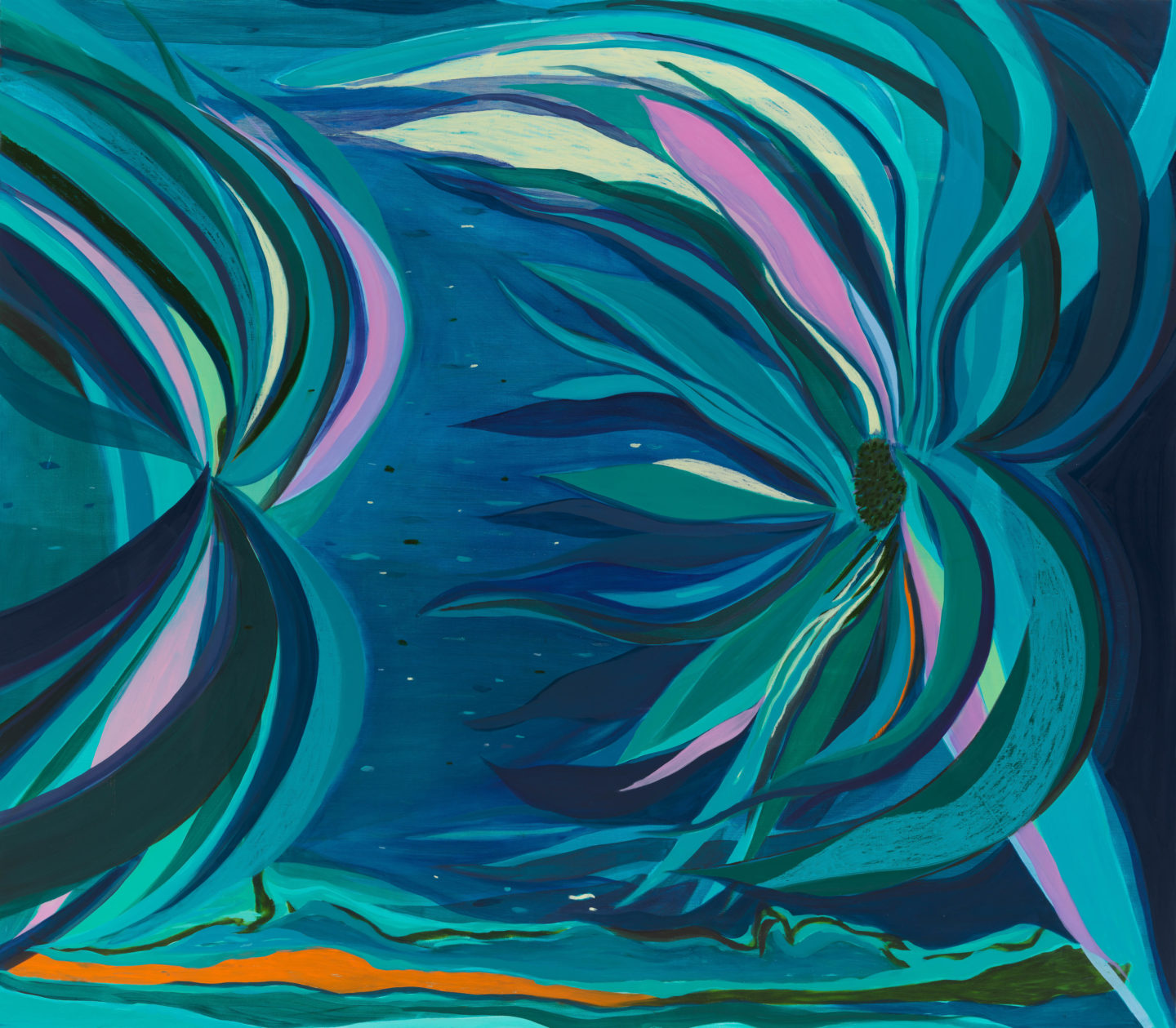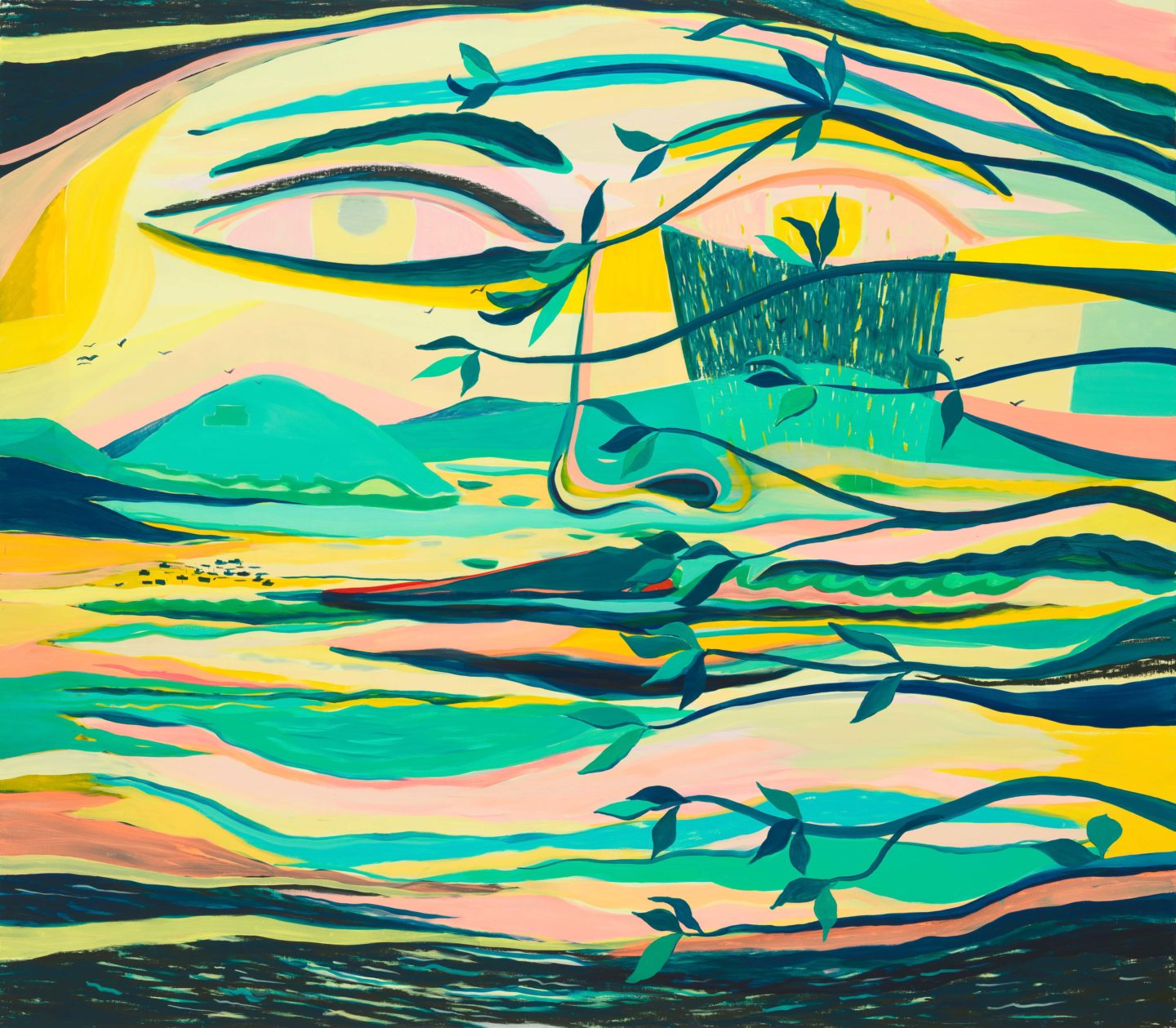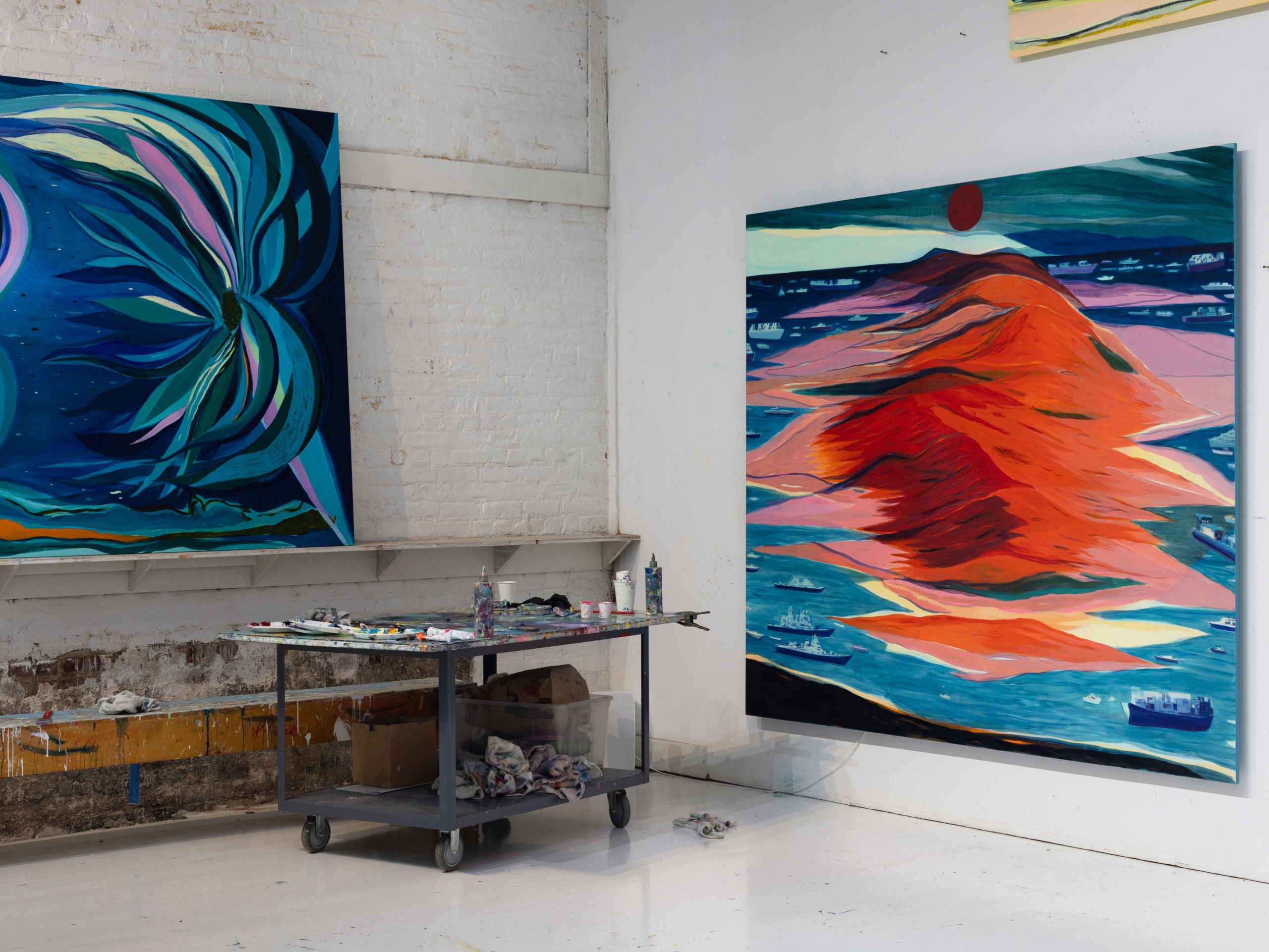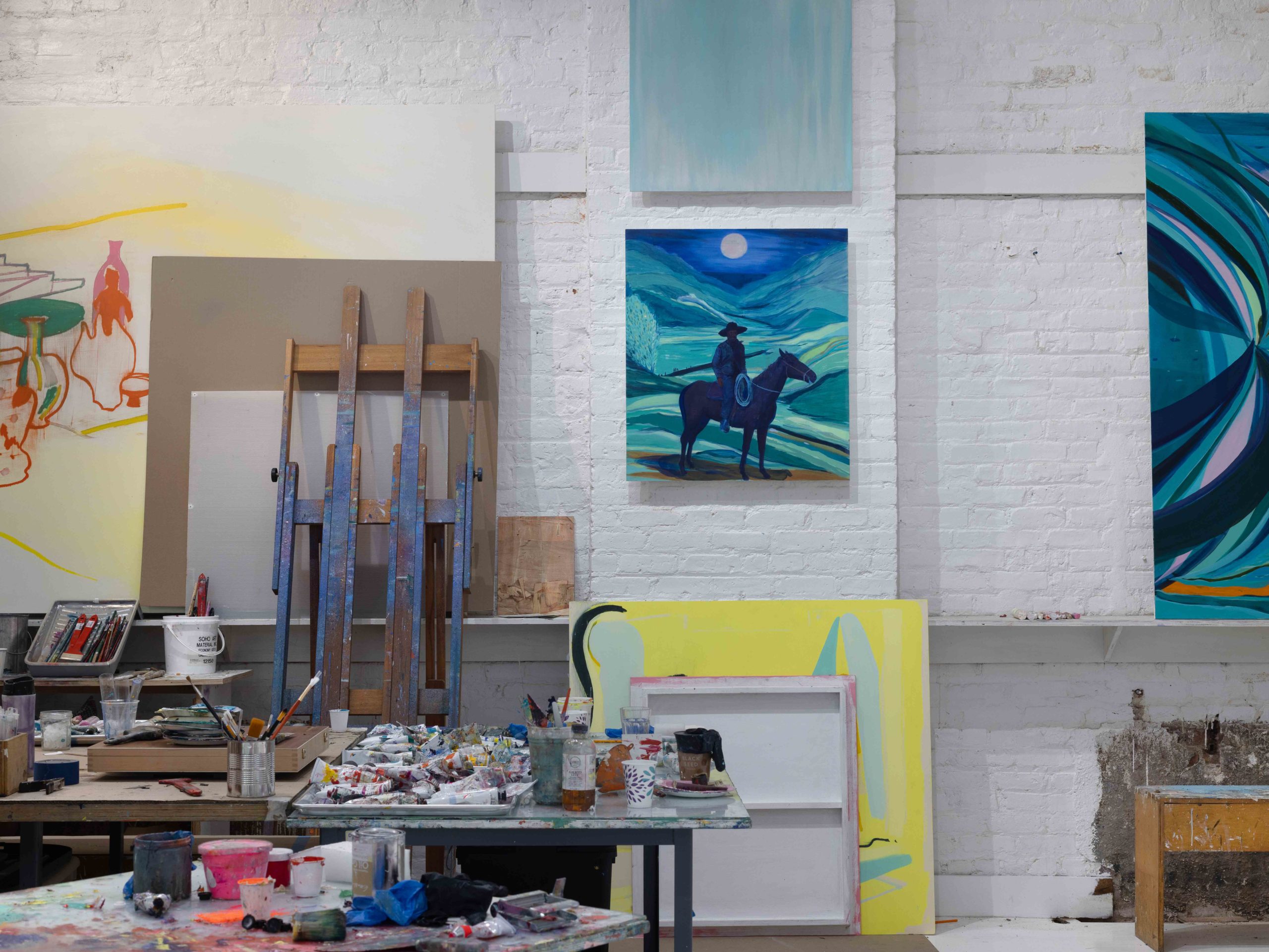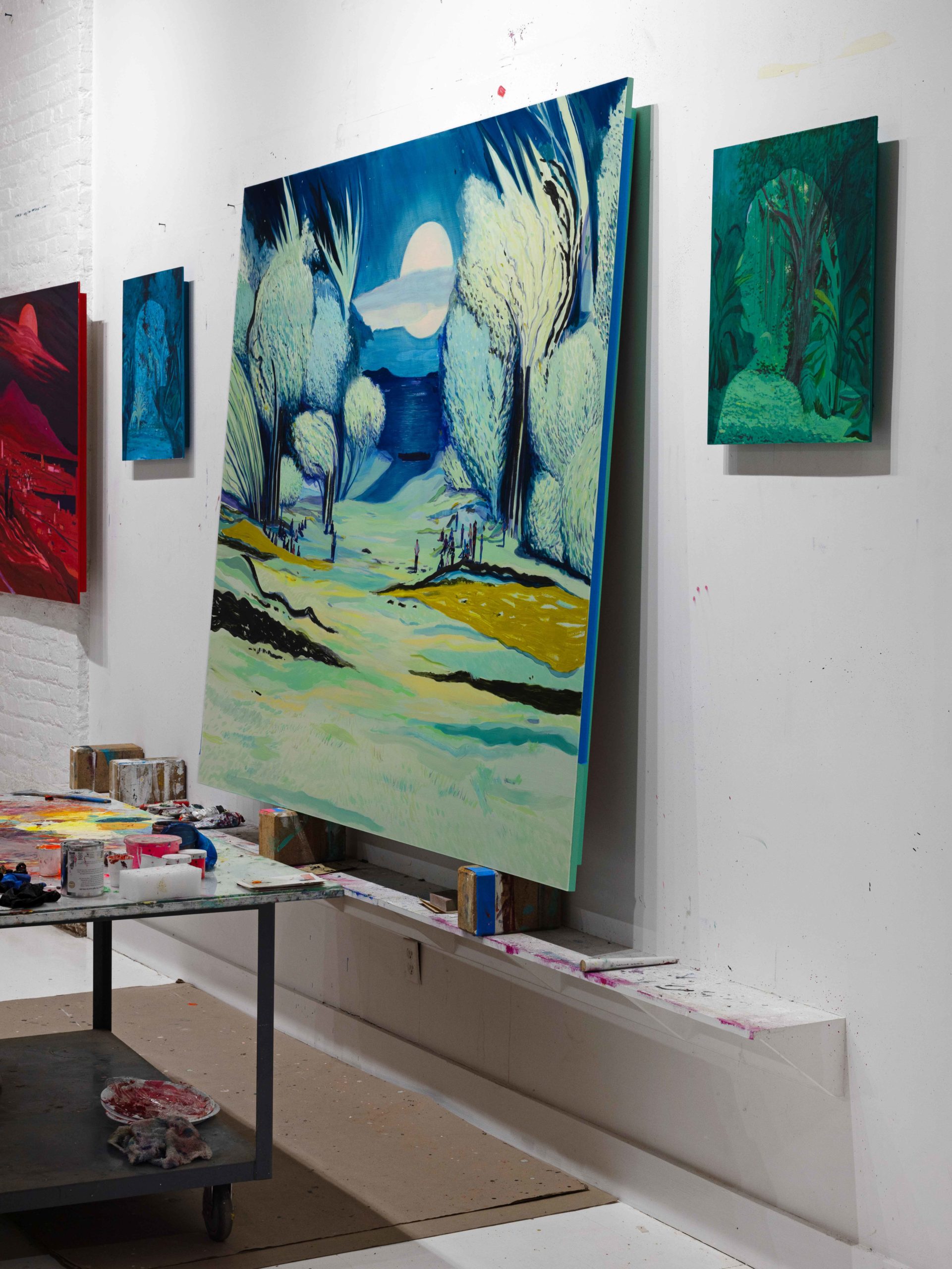Jules de Balincourt: Moving Landscapes
4 October–2 November 2024
16 Wharf Road, London N1 7RW
In this new body of work, the Brooklyn-based artist continues his exploration of painting as an intuitive process, resulting in fantasy-like worlds in which landscapes and seascapes become sites of possibility and escape.
Jules de Balincourt’s paintings are states of mind rather than descriptions of reality. Rather than rely on sketch, photography, or direct reference, the artist’s process initially involves him building up many translucent layers of paint, working from abstraction into a figurative depiction. In these ambiguous, evocative spaces, where figures seem to be in perpetual motion, one senses the movement of an ever-changing, volatile world. At times, landscapes and figures start to break down into more abstract imagery, retaining figurative elements that allude to meditation or escape from our reality.
New writing on the artist by Bob Nickas accompanies the exhibition. Excerpts are featured below; read the full essay here
Jules 1 (Figures in a Landscape)
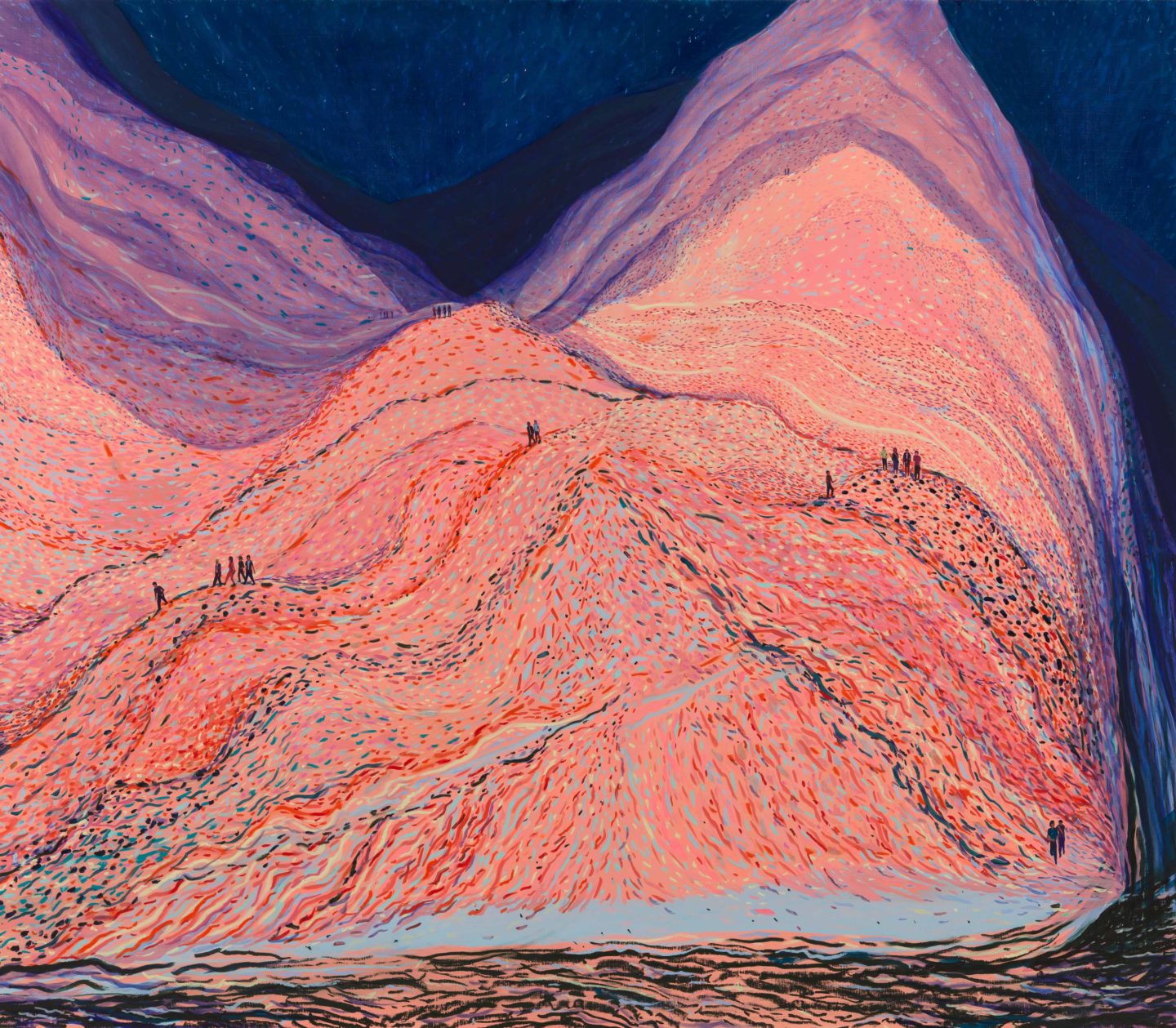
Oil and oil stick on panel
208.3 x 238.8 cm
82 x 94 in
Jules de Balincourt, Figures in a Landscape, 2024
More info‘Across twenty years, Jules de Balincourt has returned over and again to paint small groupings of people – often in natural settings, frequently at night – who appear to have assembled either by plan or spontaneously, coming together in common cause, or simply because humans tend to be drawn to one another.’ — Bob Nickas
‘These figures may well migrate from one painting to another; certainly they come from the same species, appearing more or less interchangeable. They inhabit what we know to be the fiction of painting, a fiction which is true for the mere fact that it doesn’t attempt to obscure the complete invention of a world based equally on the everyday, the imagination, and dreams – all intertwined within the artist’s lived experience.’
Jules 2 (Nocturnal Negotiations/Tree Handlers)
‘The narrative element in these works is elusive, open-ended, though in being left to speculation we understand that the artist wants the viewer to participate. Simply stated, to come to the painting is to attend the meeting.’
‘Small figures are seated together to the left and to the right, tall trees behind and above, some swaying noticeably in the wind. The open area between the figures and the trees emphasises the dark water beyond, appropriately ultramarine, a lighter blue sky and a milky moon bisected by a pale blue cloud. The point where the sea and the sky meet, that far horizon, may represent an idea of limits and limitlessness, the unknown. One ‘side’ may have gone to meet the other, to resolve their differences, to join forces? We can’t be certain.
The narrative element in these works is elusive, open-ended, though in being left to speculation we understand that the artist wants the viewer to participate. Simply stated, to come to the painting is to attend the meeting.’
Jules 3 (Manimal/Red Dawn)
‘De Balincourt has always been a vibrant, unpredictable colourist, almost a modern-day Fauvist…’
‘De Balincourt has always been a vibrant, unpredictable colourist, almost a modern-day Fauvist, and in any number of recent works he places colour-on-colour, immersing the image in a near-monochrome dream-like field. Red Dawn, 2024, suffused in deep crimson, has an eerily sci-fi feel, two figures – watchers on a hill, another of the artist’s recurrent images – overlook a Mars-like landscape.’
Jules (Moving Pictures)
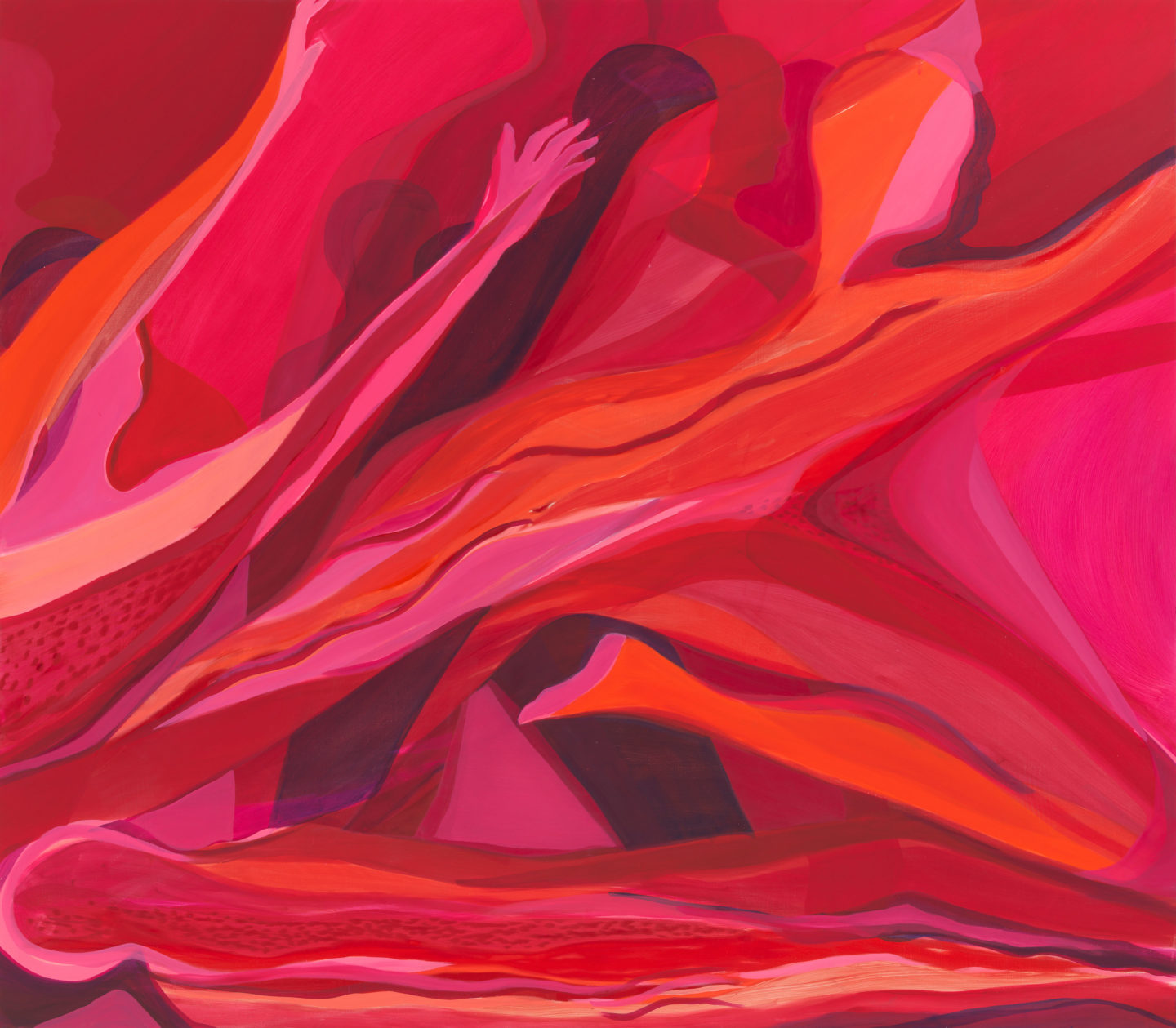
Oil and oil stick on panel
177.8 x 203.2 cm
70 x 80 in
Jules de Balincourt, Moving Pictures, 2024
More infoJules (Too Many Ships)
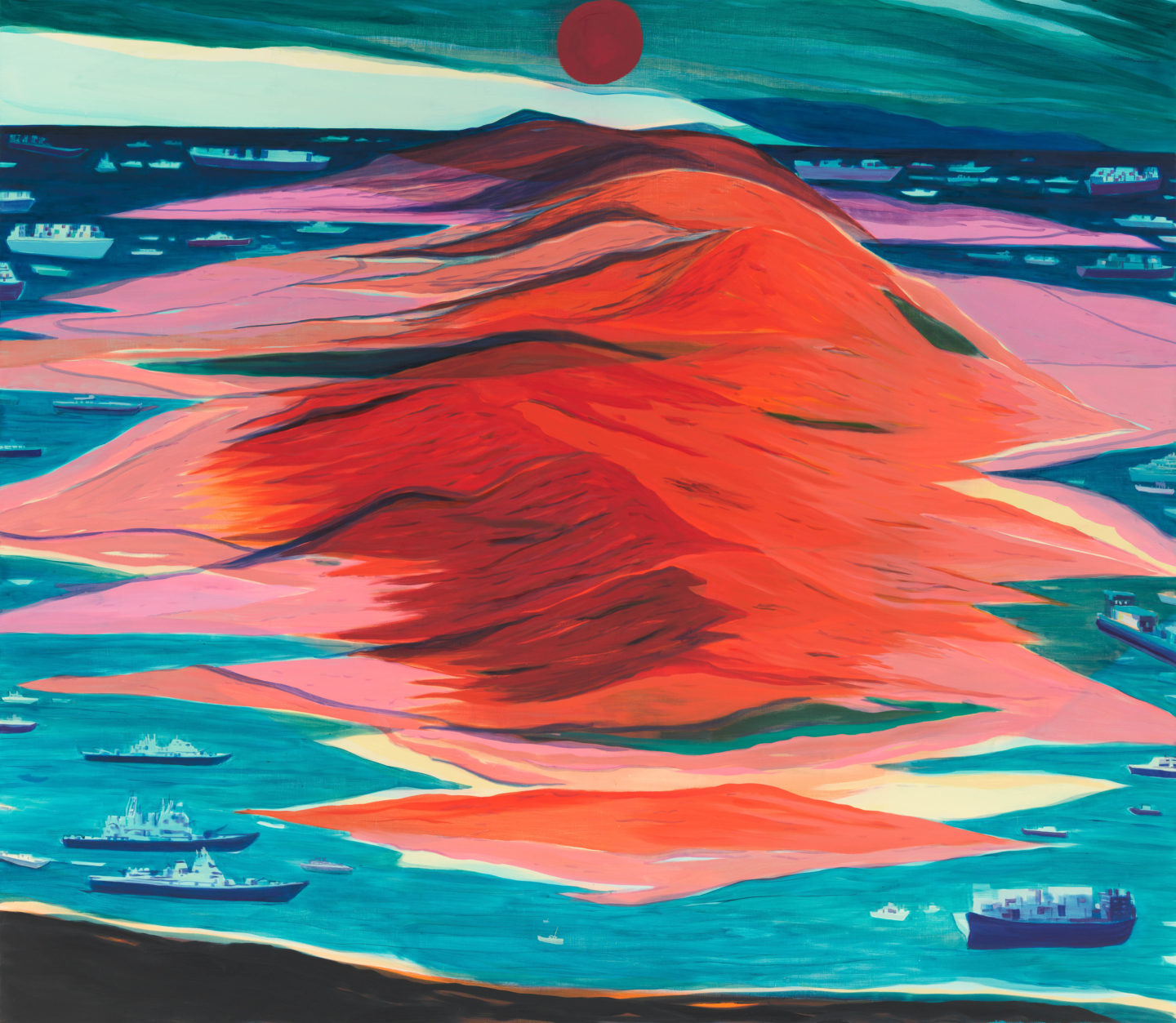
Oil and oil stick on panel
208.3 x 238.8 cm
82 x 94 in
Jules de Balincourt, Too Many Ships, 2024
More info‘Here we note the prevalence of the moon in de Balincourt’s cosmos. It hovers in the sky in many of his paintings, and in some it is ruby red, which is how it appears during a total lunar eclipse…’
‘While de Balincourt has made portraits and paintings with central figures, he is well aware that humans, no matter how self-important, are small in relation to the vastness of nature and the universe beyond. Here we note the prevalence of the moon in de Balincourt’s cosmos. It hovers in the sky in many of his paintings, and in some it is ruby red, which is how it appears during a total lunar eclipse, falling entirely within the shadow of Earth. We can easily imagine early humans being equally spooked and fascinated by this phenomenon. In prehistory, our human ancestors would have stared up at the moon and the stars in ways not so different to how we find ourselves absorbed by screens today.’
Jules (A Road to Coyote)
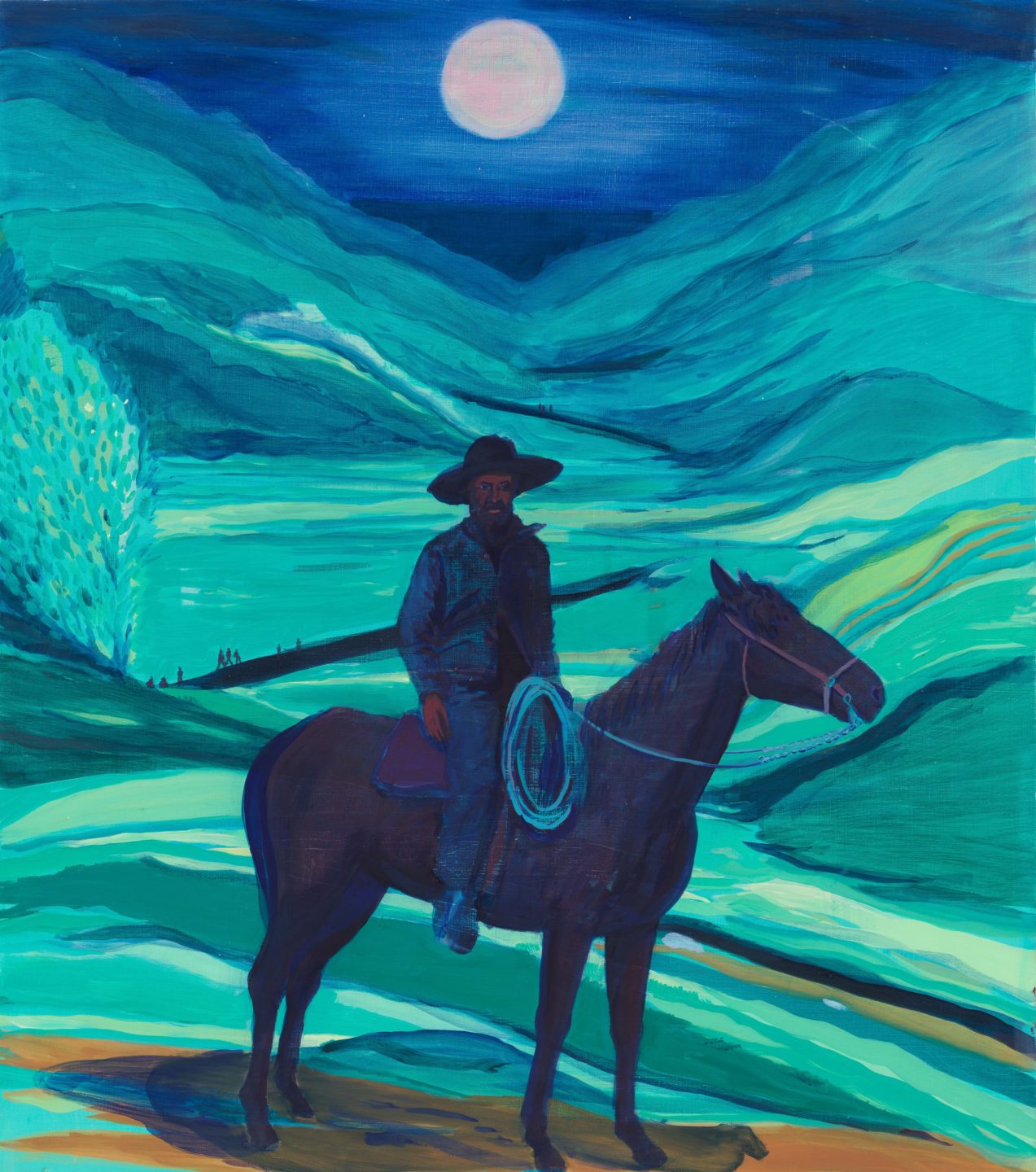
Oil on panel
86.4 x 76.2 cm
34 x 30 in
Jules de Balincourt, A Road to Coyote, 2024
More infoJules 5 (Jungle Blues/Antonino)
‘As he sees it, nature is strange, animistic, alive.’
‘For de Balincourt, as for many artists before him, abstraction is ever-present in nature. As he sees it, nature is strange, animistic, alive. In occupying our mind’s eye, it may reside and grow verdantly inside us, an idea no better represented than by a nocturnal portrait, Jungle Blues, 2024, a blue-on-blue head in profile, with surrounding flora and fauna completely internalised. Is this what the person imagines, where they want to be, or once were? “Paradise Lost”, paradise regained.’
Jules 6 (Fighting Flowers/Land Escape)
‘The artist’s approach can be understood as improvisatory, the way that music, unwritten, is imbued with a sense of free play, lines responding to and dancing around one another, extended in the moment.’
‘In another work, a seascape with land and hills beyond, the image, as in a Picabia transparency, contains another, a face looking out at us, eyes in a yellow sky, a nostril set in the beach, lips immersed in serpentine waves. The artist’s approach in these and other paintings can be understood as improvisatory, the way that music, unwritten, is imbued with a sense of free play, lines responding to and dancing around one another, extended in the moment.’
Jules Witness
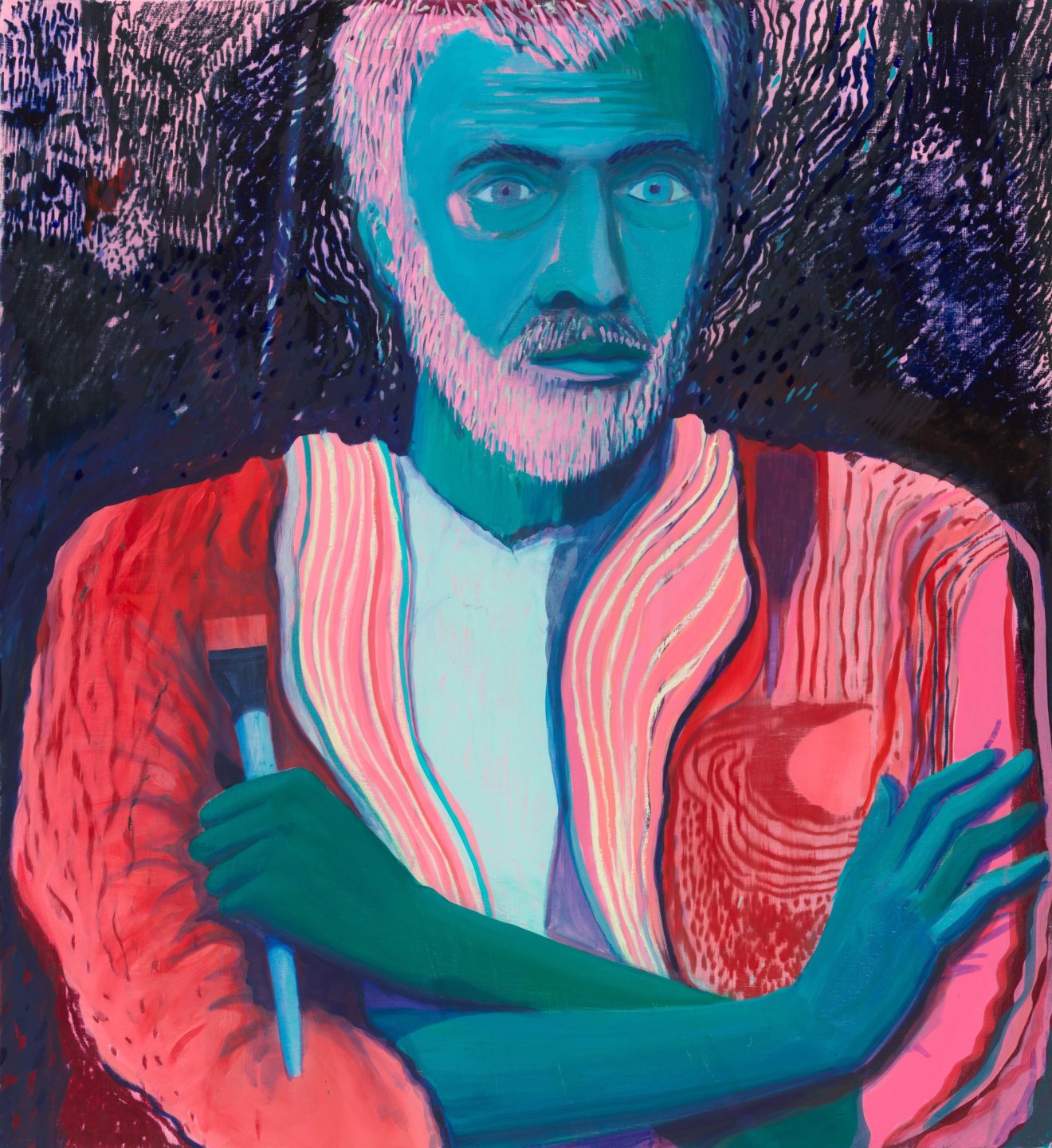
Oil and oil stick on panel
121.9 x 111.8 cm
48 x 44 in
Jules de Balincourt, Witness, 2024
More infoAbout the artist
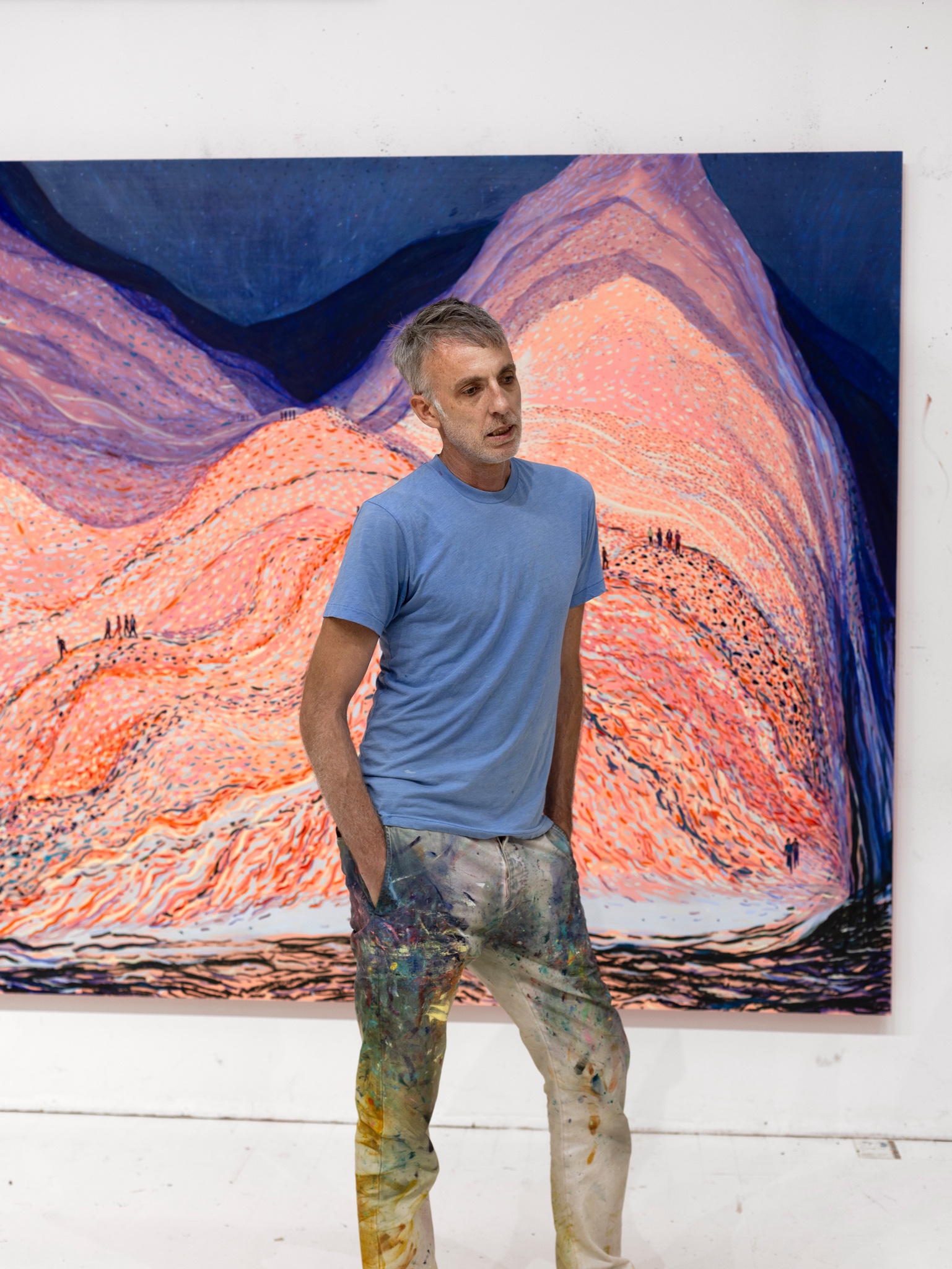
Jules de Balincourt, born in Paris, France in 1972, lives and works in Brooklyn, New York. De Balincourt’s work has been the subject of a number of international solo exhibitions at institutions including Centro de Arte Contemporáneo, Málaga, Spain (2021); Kasseler Kunstverein, Kassel, Germany (2015); The Modern Art Museum of Fort Worth, Texas, USA (2014–2015); Rochechouart Museum of Contemporary Art, Rochechouart, France (2014); Montreal Museum of Fine Arts, Montreal, USA (2013); Mori Art Museum, Tokyo, Japan (2010) and Vanderbilt University Fine Arts Gallery, Nashville, USA (2008).
De Balincourt’s work has also been included in a number of significant group exhibitions, including Unnatural Nature: Post-Pop Landscapes, Acquavella Galleries, Florida, USA (2022); Rehang, Collezione Maramotti, Reggio Emilia, Italy (2019–ongoing); Les Enfants du Paradis, MUba Eugene Leroy Tourcoing, France (2019) and Eldorama, Le Tripostal, Lille, France (2019) both as part of Eldorado: Lille 3000 (2019); The Biennial of Painting, Museum Dhondt-Dhaenens (MDD), Deurle, Belgium (2018); The New Frontiers of Painting, Fondazione Stelline, Milan, Italy (2017); The Universe and Art, Mori Art Museum, Tokyo, Japan (2016); L’Ange de l’Histoire, curated by Nicolas Bourriaud at le Palais des Beaux-Arts, Paris, France (2013); New York Minute, Garage Center for Contemporary Culture, Moscow, Russia (2011) and the 10th Havana Biennial, Museo Nacional de Bellas Artes, Havana, Cuba (2009).
Works by the artist are included in the collections of Brooklyn Museum, Brooklyn, New York, USA; Collezione Maramotti, Reggio Emilia, Italy; Los Angeles County Museum of Art, Los Angeles, USA; MaRT, Museo di arte moderna e contemporanea di Trento e Rovereto, Rovereto, Italy; Montreal Museum of Fine Arts, Montreal, Canada; Musée départemental d’art contemporain de Rochechouart, Rochechouart, France; Museum of Contemporary Art, Los Angeles, CA, USA; Portland Art Museum, Portland, ME, USA, among others.
In the studio
Photographs taken by Gautier Deblonde of works in progress in Jules de Balincourt’s Brooklyn studio, summer 2024
